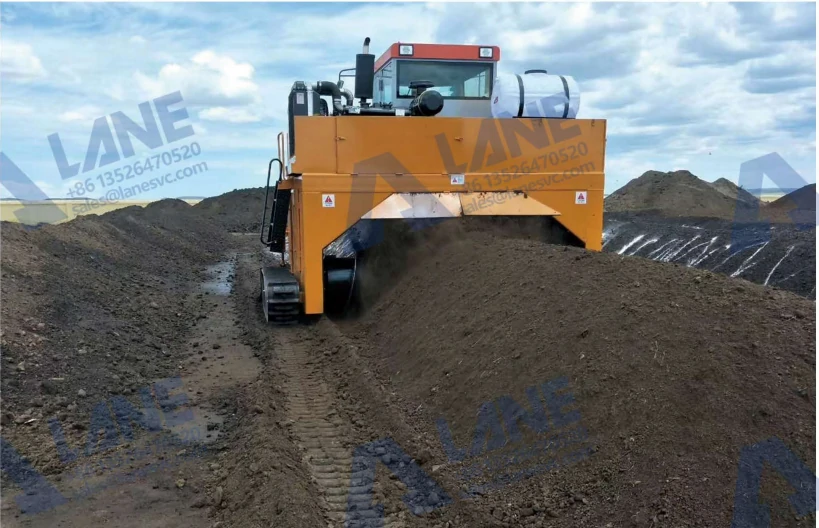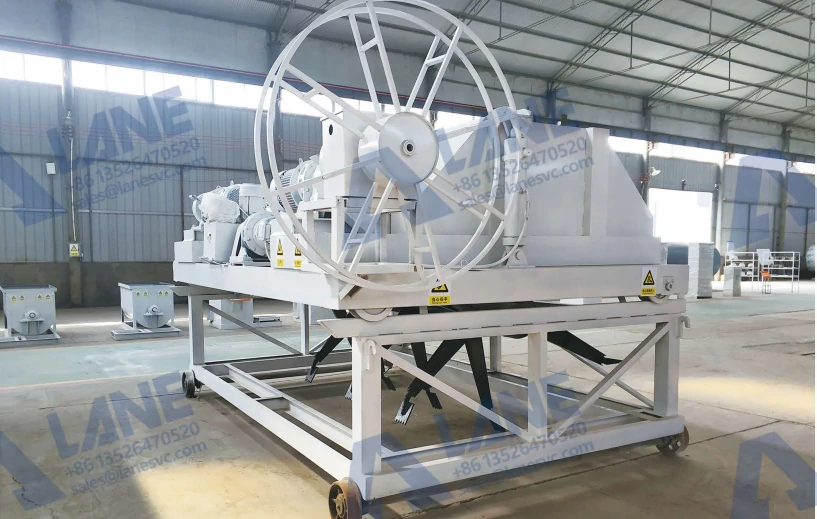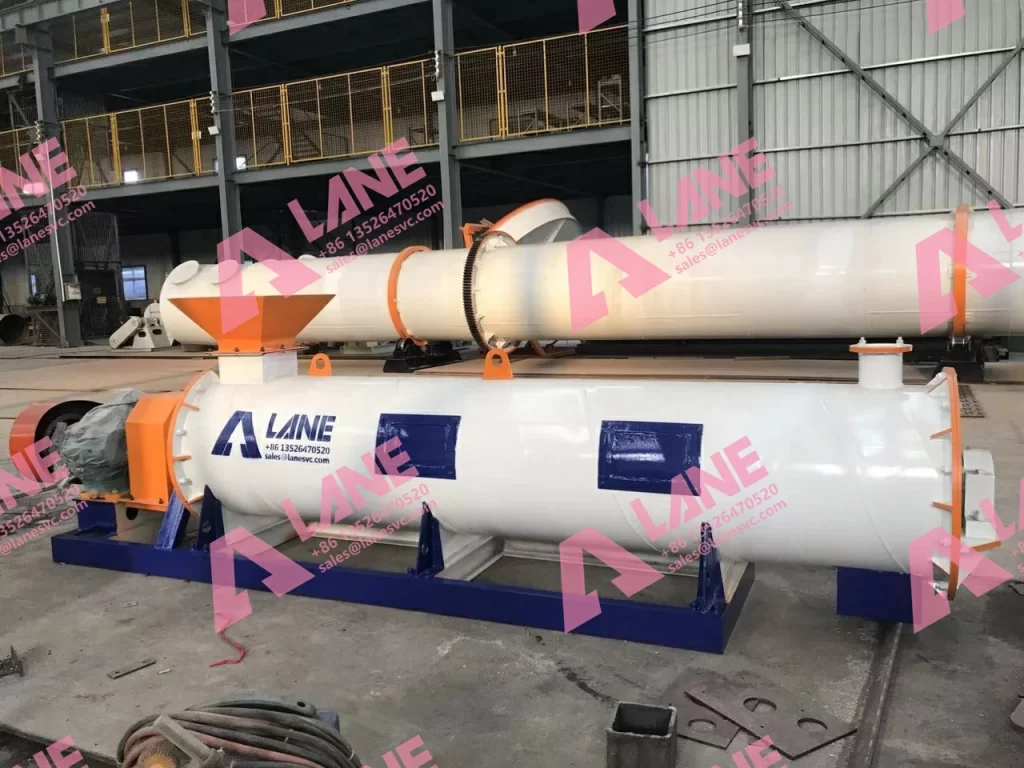The aerobic composting system for organic fertilizer has become one of the most reliable and future-oriented solutions for managing agricultural residues. As the agricultural industry continues to seek more environmentally friendly practices, farms and fertilizer plants not only use this system as a waste disposal method but also as a profitable way to produce high-value organic inputs. Unlike anaerobic methods that rely on oxygen-free environments and often produce unpleasant odors or methane emissions, aerobic composting utilizes oxygen-rich conditions to accelerate decomposition and generate high-quality fertilizers that can directly improve soil health.
In fact, the aerobic composting system is all about transforming waste into resources. Crop residues, livestock manure, and even food processing by-products can all be incorporated into a controlled composting process where temperature, humidity, and aeration are precisely regulated. The end product is a nutrient-rich organic fertilizer that can restore soil health, boost crop yields, and meet the growing demand for sustainable agricultural practices.

How the Aerobic Composting System for Organic Fertilizer Runs
An aerobic composting system for organic fertilizer is not simply a pile of waste decomposing; it is a controlled biological process where every step—from raw material intake to finished product packaging—is monitored and optimized. Below is a full walkthrough of how such a system typically operates.
(1) Feedstock Intake and Pre-Sorting
The process begins with the reception of feedstock such as poultry manure, crop residues, straw, rice husks, and food or garden waste. At this stage, contaminants like plastics, metals, and stones are removed using manual sorting and magnetic separators. Moisture and pH are measured to ensure proper adjustment before composting (ideal moisture 55–60%, pH 6.5–8.0).
(2) Size Reduction and Blending
Large, bulky crop residues are crushed with a vertical shaft crusher to 20–50 mm particle size. This enhances surface area and aeration. The crushed residues are then blended with animal manure in a target C/N ratio of 25–30:1. Water is added if necessary until the material holds moisture like a wrung sponge.
(3) Microbial and Additive Application
Biological inoculants—such as compound microbial agents or enzyme preparations—may be introduced to accelerate the degradation of cellulose and lignin. Structural bulking agents (e.g., biochar, sawdust) can also be added to improve porosity, while small amounts of lime help stabilize pH.
(4) Pile or Groove Formation
The blended material is shaped into windrows or loaded into concrete grooves, depending on the system design. Windrows are usually 2.5–3.5 m wide and 1.5–1.8 m high, while groove systems rely on groove type compost turners for mechanized agitation. The key is to maintain sufficient porosity without over-compaction.

(5) Thermophilic Phase Management
Within a few days, microbial activity drives the compost into the thermophilic range (55–65 °C). Maintaining this temperature for at least three consecutive days ensures pathogen and weed seed destruction. Oxygen is supplied either through crawler type compost turners (mechanical aeration) or via forced aeration pipes connected to blowers. Turning frequency depends on temperature and oxygen readings—initially daily, then gradually reduced.
(6) Moisture and Oxygen Regulation
Moisture below 50% slows microbial metabolism, while above 65% creates anaerobic pockets. Sprinklers or drip systems are used to maintain balance. Oxygen sensors and portable probes ensure O₂ concentration remains above 10%. Turning also redistributes water and oxygen throughout the pile.
(7) Odor and Leachate Control
To mitigate odor, piles may be covered with semi-permeable membranes, and exhaust air can be treated through biofilters filled with wood chips or mature compost. Leachate is collected via drainage channels and returned to the pile as process water, closing the loop and preventing pollution.
(8) Transition to Curing Phase
When pile temperatures stabilize and no longer spike after turning, the compost enters the curing phase. Turning frequency decreases to once every 7–10 days. During this stage (2–4 weeks), organic matter stabilizes, humic substances form, and the product becomes mature.
(9) Compost Maturity and Quality Testing
Maturity is confirmed when:
Moisture content reaches ~30–35%.
C/N ratio drops to 15–20:1.
Compost emits an earthy smell, free of ammonia.
Temperature is close to ambient levels.
Optional lab tests (germination index, respiration rate, Solvita index) further validate compost stability and safety.
(10) Post-Processing: Crushing and Screening
Lumps are crushed and oversized particles are screened out (6–12 mm). Oversized fractions are recycled back into the process. The screened product can be marketed as fine compost or processed further.
(11) Granulation and Polishing (Optional)
For higher market value, compost is granulated using rotary drum churning teeth two-in-one granulator or stirring pin granulators. A polishing machine ensures uniform, round pellets. The granules are then dried and cooled to a safe storage moisture of 10–12%.

(12) Packaging and Storage
Finished compost, whether powder or granules, is packed using an automatic packing machine into 25–50 kg bags or large tonnage bags (FIBC). Proper storage in ventilated warehouses ensures long shelf life without clumping.
Modern aerobic composting systems integrate sensors, PLCs, and cloud dashboards. Parameters like temperature, oxygen, moisture, and turning frequency are recorded for traceability. Key performance indicators (cycle time, energy consumption, volume reduction) guide operators in refining the process.
The aerobic composting system for organic fertilizer transforms diverse organic wastes into a stable, nutrient-rich product through controlled biological and mechanical operations. Each step—from raw material preparation to packaging—is designed to maximize efficiency, safety, and environmental performance, ensuring that composting is not only sustainable but also commercially viable.
Why Aerobic Composting Systems Are Becoming Essential
The growing emphasis on sustainable agriculture has made the aerobic composting system for organic fertilizer more than just a technical solution; it has become a necessity. Chemical fertilizers have long dominated farming, but their environmental footprint—soil degradation, water pollution, and greenhouse gas emissions—has raised significant concerns. By contrast, composting systems reduce waste, recycle nutrients, and support healthier soils.
Another reason for the system’s rising popularity is regulation. In many regions, farms are no longer allowed to dispose of livestock manure or crop residues without treatment. Aerobic composting system provides a compliant and cost-effective pathway that turns an obligation into an opportunity. Farmers not only meet environmental standards but also generate additional income from selling organic fertilizer.
LANE’s Strength in Delivering Composting Solutions
Over the years, LANE has become a trusted partner in building aerobic composting systems for organic fertilizer across different scales of production. What makes LANE stand out is not only the reliability of its equipment but also its ability to provide end-to-end solutions. From the design of fermentation grooves to the integration of intelligent monitoring systems, every installation is tailored to the client’s raw material composition, land availability, and production targets.
For small farmers, compact systems with crawler type turners may be sufficient. For larger industrial plants, LANE delivers complete lines that include aeration systems, automatic compost turners, granulation units, and packaging solutions. Clients benefit not just from equipment, but also from on-site guidance, operator training, and long-term technical support. This service-driven approach ensures that once the system is installed, it continues to operate at peak efficiency for years.
The Broader Benefits of Aerobic Composting System
Beyond the direct agricultural advantages, an aerobic composting system for organic fertilizer contributes to a broader vision of sustainability. By reducing methane emissions, it helps combat climate change. By recycling nutrients, it closes the loop in agricultural production and strengthens the concept of a circular economy. And by producing organic fertilizers, it supports the rising consumer demand for food grown without synthetic chemicals.
In practice, the benefits extend to multiple stakeholders: farmers gain healthier soils, communities experience reduced odor and pollution, and businesses find profitable opportunities in organic fertilizer markets. This holistic impact is why many experts see aerobic composting not as an option, but as a pillar of future farming.
As agriculture modernizes, the role of aerobic composting systems for organic fertilizer will only grow stronger. The future points toward smarter technologies—IoT-based sensors for moisture and temperature, automated turners that optimize aeration schedules, and data-driven systems that reduce operator intervention. There is also a clear move toward regional composting hubs, where waste from multiple farms can be processed collectively into high-value fertilizer.
For producers, investing in such a system today is not just about waste management; it’s a strategic move to secure a place in the sustainable agriculture of tomorrow. With LANE’s expertise and support, the pathway to efficient composting becomes both practical and profitable.
An aerobic composting system for organic fertilizer is far more than a waste management tool. It is a strategic investment that transforms agricultural residues into valuable, eco-friendly fertilizer while supporting sustainable farming practices. With the right equipment—turners, aeration systems, fermentation grooves, and packing units—the process becomes efficient, scalable, and profitable.
LANE continues to support clients worldwide with advanced composting systems, technical expertise, and long-term service. For those ready to make agriculture cleaner, more efficient, and future-proof, aerobic composting stands as a proven solution.
For more details, please feel free to contact us.
Henan Lane Heavy Industry Machinery Technology Co., Ltd.
Email: sales@lanesvc.com
Contact number: +86 13526470520
Whatsapp: +86 13526470520